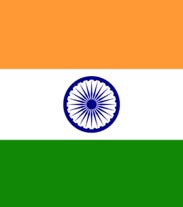Sign up for FlowVella
Sign up with FacebookAlready have an account? Sign in now
By registering you are agreeing to our
Terms of Service
Loading Flow

Agriculture
Why was the monsoon season so important to farmers in the Indian River Basin?
India
To achieve their agricultural potential, Indian lands lands required watering from the southern monsoon, supplemented by irrigation during the dry months.
Describe the irrigation systems that were used in the basin.
Irrigation systems have been a part of the Indian society since the Harappan times. When the Aryans came to the Ganges River, they had many opportunities to build irrigation systems. Southern India was where the large scale irrigation took place.
Why was India’s population able to grow throughout the postclassical era?
India's population was able to increase because of their increased productivity. From 600 C.E to 1500, India's population went from 53 million people to 105 million people.
Describe the popular trade items inside the Indian subcontinent.
India was self sufficient in staple foods, but iron, copper, salt, pepper, spices, condiments, and specialized crops grew in only certain regions.
Describe the caste system in India and how it affected Indian society.
Although India's caste system was threatened and faced with many challenges, but it was able to survive and closely reflected changes in Indian society.
What bodies of water were used to exchange trade items? What were some key trade
routes?
How did the caste system spread to different regions in India.
The Arabian Sea, the Bay of Bengal, South China Sea, the Pacific Ocean, and the Indian Ocean are all bodies of water that India used to exchange items. Key trade routes include Quilon to Mombasa, Cambay to Basra, and Ganghzhou to Surat.
Economic development and powerful temples helped the caste system diffuse throughout India. Commercial relationships were encourages between the North and South, and temples fostered caste distinctions through religion and local social life.
For years, Indian Artisans have been creating high-quality cotton textiles, along with sugar refining, leather tanning, stone carving, and carpet weaving. India also had booming steel and iron production for knives and swords.
What special commodities were produced for the commercial market? (Indian Artisans)
By:
Rayna Magesh


Trade
Caste

